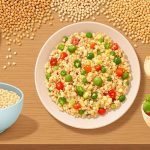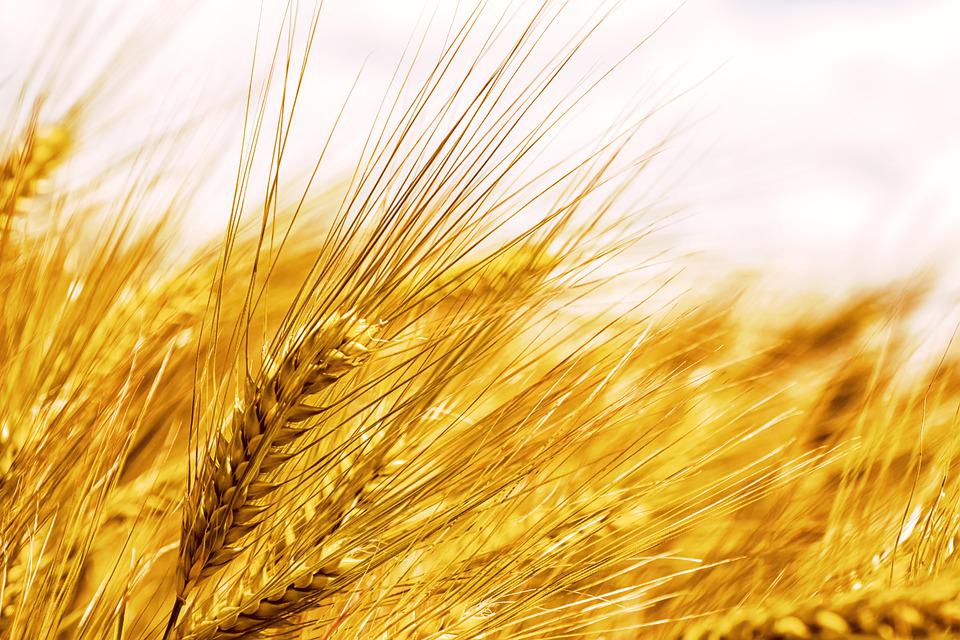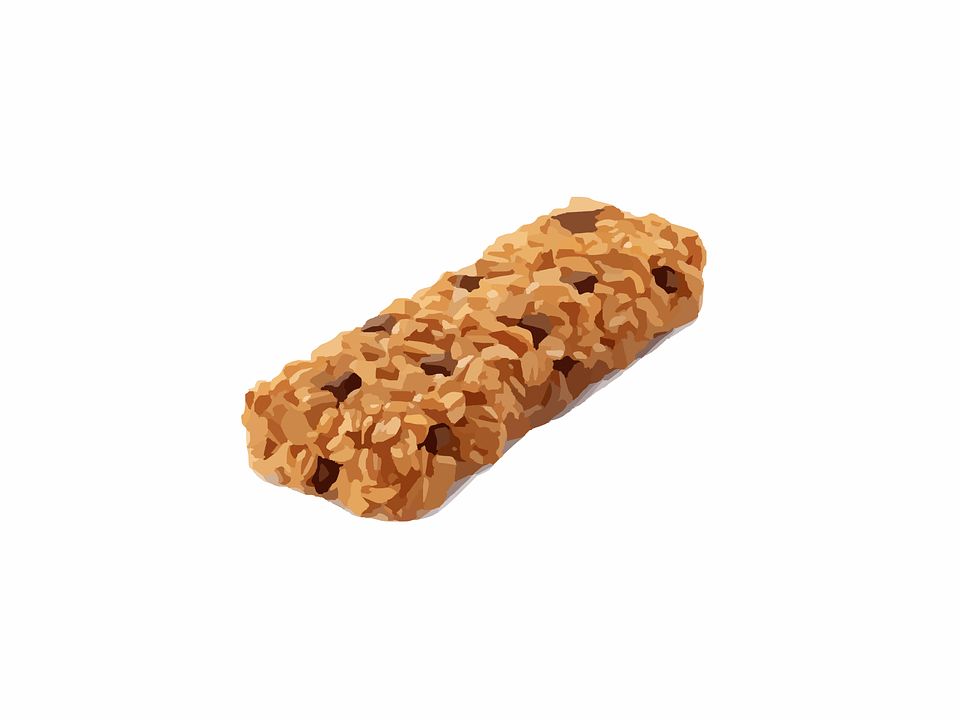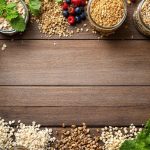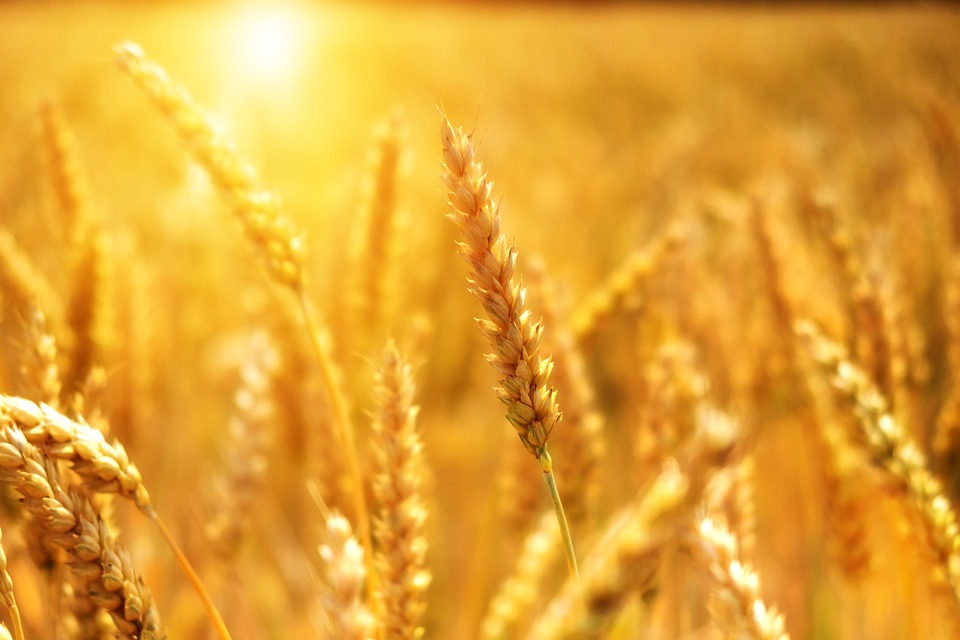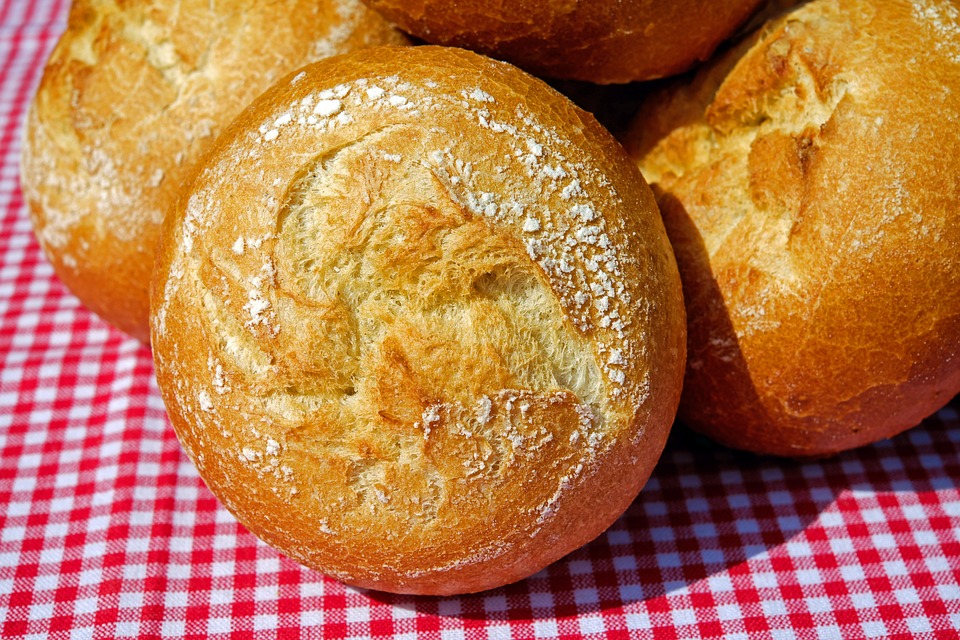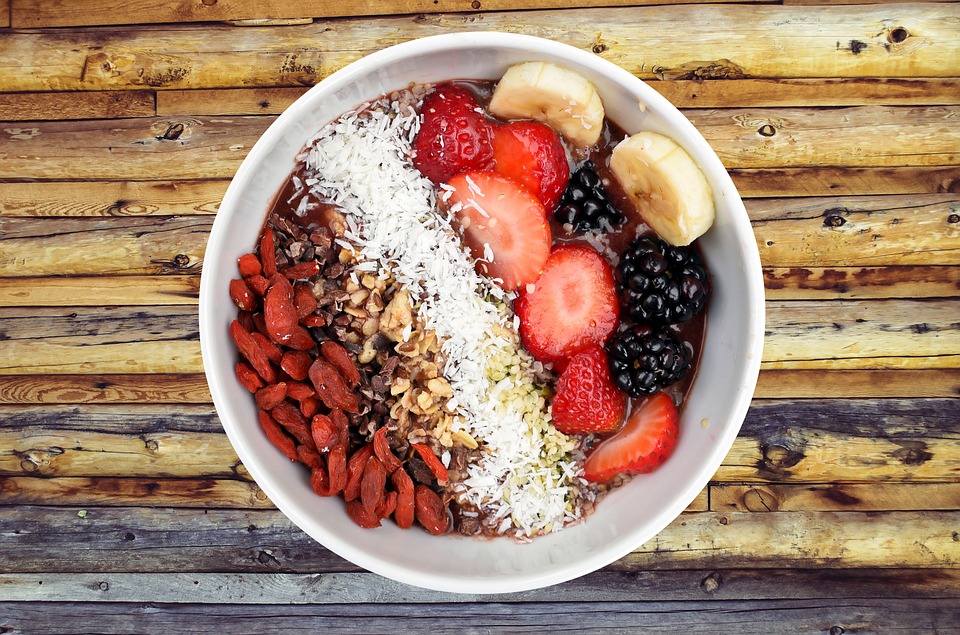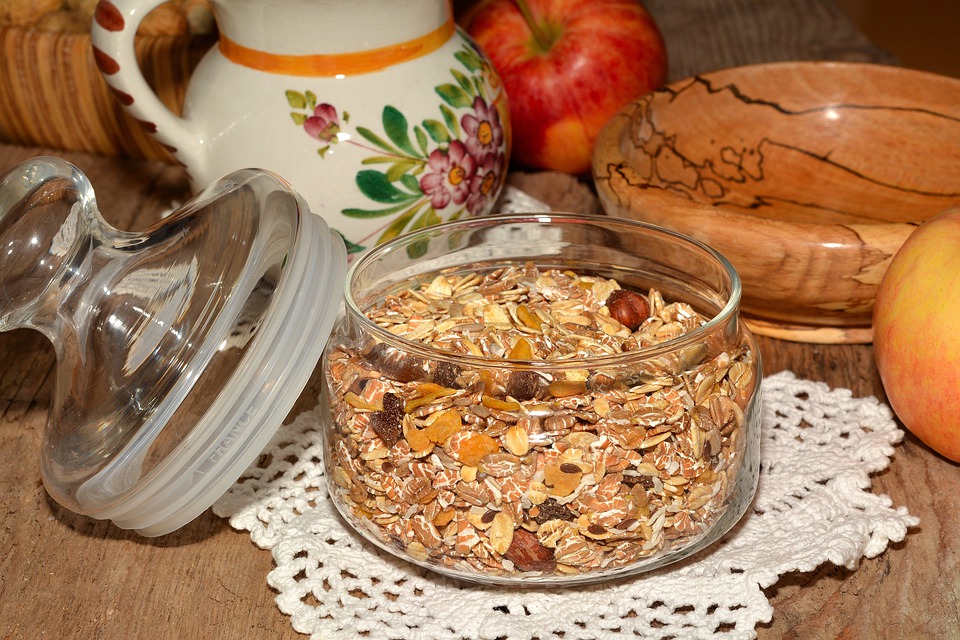
What are the main ingredients of bran flakes?
The main ingredient in all brands of bran flakes is wholewheat, though the ingredients vary slightly between brands.
The word ‘whole’ is important to look for when choosing wheat, as it means that the kernel of bran has been left intact and not mixed with any other grains.
The outer layer of the wheat kernel is called wheat bran. It is rich in minerals and a good source of fiber. Adding wheat bran to cereal gives it a slightly sweet, nutty taste.
Although this is the case, many brands still add sugar to their bran flakes. This results in the cereal having empty calories.
Barley malt extract is an ingredient in all of the brands of cereal we researched. It is used to improve the flavor and make high-fiber cereals more palatable by adding sweetness.
Every bran flake brand we checked had some amount of salt in it.
Are bran flakes high in sugar?
14 grams of sugar is the highest amount of sugar per 100 grams for Kellogg’s Bran Flakes compared to other brands. The other brands that were researched for this article had between 10.8 grams and 12 grams of sugar.
Foods that are high in sugar contain 22.5 grams or more of sugar per 100 grams. Foods that are low in sugar contain 5 grams or less of sugar per 100 grams.
Bran flakes are not a low sugar food, but they are also not classified as a high-sugar food.
According to the NHS website, an adult should consume no more than 30g of sugar per day, which is equivalent to approximately seven cubes of sugar.
If you eat a big portion (50g) of bran flakes, then you will have between 5.4g and 7g of sugar, depending on the brand. This is around 20% of the daily recommended sugar intake.
If you eat bran flakes as your only source of sugar for the day, you’re not consuming too much sugar as long as you’re careful about how much you eat.
If you eat a lot of sugary foods during the day, you will consume more sugar than is recommended, and bran flakes will add to that amount.
It is better to eat unsweetened wholegrain breakfast cereal with no added sugar if you are trying to be healthier, especially if you want to lose weight or cut back on sugar.
If you want a healthier breakfast, choose a bowl of bran flakes and add fresh berries for sweetness. You’ll get one of your five daily servings of fruit this way.
Are bran flakes a good source of fiber?
Wholewheat cereals like bran flakes have a lot of fiber. This is good because there is evidence that fiber can lower the risk of type 2 diabetes and bowel cancer. Fiber is also important for digestion and preventing constipation.
Eating foods that are high in fiber can help keep you feeling full longer, which can help with weight loss and prevent you from snacking between meals.
The government recommends that adults consume 30g of fiber per day as part of a balanced diet, but most adults only consume an average of 18g per day.
Bran flakes are a high-fiber cereal—a 50g portion will deliver about a quarter of the recommended daily amount of fiber.
If you want to eat more fiber, you can add bran flakes to fat-free yogurt or use them as a topping on a fruit pie.
What is the fat content of bran flakes?
The Tesco brand of bran flakes has the lowest fat content at 2.4 grams per 100 grams.
Although bran flakes are often eaten with milk, the nutritional content of a bowl of bran flakes will change when milk is added.
A serving of bran flakes with milk will have different fat content depending on your choice of full-fat, semi-skimmed, or skimmed milk.
Protein content in bran flakes
The amount of protein in each brand we looked at varies from 10.6g to 12g for every 100g.
According to the NHS website, an average adult should aim to consume 50 grams of protein per day. Protein is key to building and maintaining our body tissue and muscles.
If you eat 50g of bran flakes for breakfast, you will consume 5-6g of protein without including the milk.
Add a spoonful of fat-free Greek yogurt to your bowl of oats for an extra protein boost.
An overview of the vitamins and minerals in bran flakes
Bran flakes are a good source of niacin, which is important for maintaining a healthy nervous system and skin. Niacin also helps turn food into energy.
Bran flakes contain added vitamins and minerals to help you meet your recommended daily intake.
Niacin is not the only form of Vitamin B in bran flakes; in the brands, we researched there was also the following present:
- Pantothenic Acid (B5): Helps the body to release energy from food. Prevents fatigue and helps the body withstand stress.
- Thiamin (B1): Helps the body to break down food and release its energy. Vital for the maintenance of a healthy nervous system.
- Riboflavin (B2): This cannot be stored in the body, so a daily intake is needed to maintain skin, eye, and nervous system health.
- Vitamin B6: Helps form hemoglobin that carries oxygen around the body. Important for a healthy immune system.
- Vitamin B12: Involved in the production of red blood cells. Necessary for a healthy nervous system. Improves memory and concentration.
- Folic Acid: A ‘man-made’ form of folate, which can help to reduce the risk of birth defects in unborn babies. Necessary for red-cell production and vital for all cell divisions.
Iron is a key component in all of the bran flakes we looked at. It plays an important role in making red blood cells and transporting oxygen throughout the body.
The iron levels in bran flakes from other brands can vary The iron content in bran flakes can range from 8.0mg/100g to 57% of an adult’s recommended daily intake.
If you are looking to increase your iron intake, Tesco bran flakes are a better choice as they contain 14mg of iron per 100g.
What is the healthiest cereal to eat?
If you’re looking for a healthy cereal, opt for one that is organic, high in fiber, low in sugar, and under 200 calories per serving. Avoid cereals with preservatives or artificial colors/flavors.
The Top 20 Healthiest Breakfast Cereals
Healthiest O’s, Puffs, Crunchy Cereal, Oats, and Flakes
Forager Grain-Free Cereal
Forager Cereals is my top pick for the best healthy cereal on the market today! With a super clean ingredients list including navy beans and cassava root, and comes in three delicious flavors, it’s no wonder I eat it daily!
One Degree Foods Organic Sprouted O’s
There are many healthier alternatives to Cheerios, but this whole-grain cereal is one of the best. It is made with sprouted whole oat flour and sprouted chickpeas, which makes it rich in vitamins and minerals and easier to digest. Each 3/4 cup serving of this cereal has 110 calories, 3 grams of fiber, 2 grams of sugar, and 3 grams of protein.
Nature’s Path Organic Puffed Kamut
This cereal is made from only one ingredient – organic whole-grain Kamut Khorasan wheat. It doesn’t contain any artificial flavors, preservatives, or colors, and is certified USDA Organic, vegan and non-GMO. 1 cup has 50 calories, 2 grams of fiber, 0 grams of sugar, and 2 grams of protein.
Barbara’s Original Puffins
This is my favorite cereal from Barbara’s line. It is also one of the most popular cereals I’ve found for kids that’s actually healthy! Non-GMO, crispy, and slightly sweet. 3/4 cup has 90 calories, 5g fiber, 5g sugar, and 2g protein. Enjoy it with low-fat milk, or your favorite plant-based milk.
Toasted Oat cereal is a good source of fiber, but it isn’t very tasty. Kashi’s Heart to Heart, Honey Toasted Oat / Honey Nut Toasted Oat cereal is a good source of fiber, but it doesn’t have a great taste.
This product is certified by the USDA to be organic. It is also perfectly sweet, crunchy, and packed with whole grains. 3/4 cup of this product has 120 calories, 4g of fiber, 5g of sugar, and 3g of protein.
Kashi Heart to Heart, Warm Cinnamon
This product is certified organic by the USDA. It is very high in cinnamon, crunchy, and packed with whole grains. 3/4 cup has 120 calories, 4g fiber, 5g sugar, and 3g protein.
Nature’s Path Flax Plus Flakes
The best alternative to cornflakes or bran flakes is an organic, non-GMO, slightly sweetened cereal. One cup has 150 calories, 7g fiber, 5g sugar, and 5g protein. This cereal is a great way to start your day or to have a healthy snack.
Barbara’s Shredded Spoonfuls Multigrain
If you want something that tastes similar to shredded wheat but is healthier for you, consider trying this alternative. Non-GMO and without high fructose corn syrup, this cereal is sweetened with molasses instead of refined sugar. You’ll get 4 grams of fiber and 3 grams of protein in each 3/4 cup serving, and it only has 120 calories.
Cascadian Farm Organic Purely O’s
If you’re looking for a healthier alternative to regular Cheerios, this organic cereal is a great option. It’s crunchy and mild, making it a perfect finger food or cereal for toddlers and kids. Each 1.5 cup serving has 140 calories, 4g of fiber, less than 1g of added sugar, and 4g of protein.
Uncle Sam Toasted Whole Wheat Berry Flakes & Flaxseed
There are only four ingredients in this non-GMO, vegan cereal, which is high in fiber and low in sugar. Three-quarters of a cup of this cereal has 220 calories, 10 grams of fiber, no sugar, and 8 grams of protein. I think this is the best cereal, but it is not very flavorful. I suggest buying this cereal and mixing it with another cereal to improve the taste.
Three Wishes Unsweetened Protein Cereal
The cereal called Three Wishes is made without grain, is vegan, has no sugar, and is gluten-free. It is also a high-protein food that is okay to eat if you are following the paleo diet. The unsweetened version of this cereal only has four ingredients: chickpeas, tapioca, pea protein, and salt. It is low in carbohydrates, high in protein, and high in fiber. For example, one cup of this cereal has 146 calories, 3 grams of fat, 20 grams of carbs, 4 grams of fiber, zero grams of sugar, and 11 grams of protein.
Nature’s Path Organic Old Fashioned Rolled Oats
One of the best healthy cereals is organic rolled oats. It is low glycemic compared to instant oats, which helps to stabilize blood sugar and cholesterol levels. It is rich in B vitamins and has a high fiber content. It is also packed with essential minerals.
Healthiest Granola, Raisin Bran, and Gluten-Free Cereal
The cereals in this next set are the healthiest granola, raisin bran, and gluten-free cereal options!
KIND Granola Oats & Honey
This gluten-free, non-GMO breakfast food is slightly sweet and perfect for topping greek yogurt bowls or smoothie bowls. 1/3 of a cup has 120 calories, 2g fiber, 5g sugar, and 2g protein.
Bear Naked Fit Vanilla Almond Crunch Granola
This granola is made with whole-grain oats and hearty almonds and is a great choice for low-calorie, low-sugar options. 1/4 cup has 120 calories, 2g fiber, 3g sugar, and 3g protein.
Nature’s Path Flax Plus Raisin Bran
This is a healthier alternative to Kellogg’s Raisin Bran because it is higher in fiber and contains healthy fats from the flax seeds.
Purely Elizabeth Granola
The cereal is made with quinoa, amaranth, and chia and is USDA organic and non-GMO. It is a low-sugar cereal option that is high in fiber and protein.
Seven Sundays Blueberry Chia Buckwheat Muesli
This food is certified to be gluten-free and is made with wild blueberries, pumpkin seeds, and chia seeds. 1/2 cup has 250 calories, 6g fiber, 3g added sugar, and 8g protein.
Ezekiel 4:9 Organic Sprouted Whole Grain Cereal, Original
This granola is made with sprouted live grains, legumes, and seeds, and has no flour. It is high in fiber and protein and low in sugar. I would recommend this granola, but it is a little bland and works well when paired with another cereal.
Love Grown Original Power O’s
This food is made without genetically modified organisms, it is suitable for vegans, it does not contain gluten, and it is made with beans and lentils. 1 serving size (1 cup) contains 130 calories, 4g of fiber, 2g of sugar, and 6g of protein.
Barbara’s Puffins Honey Rice
If you are looking for a gluten-free cereal that also happens to be Non-GMO, 3/4 cup of this cereal has 120 calories, 3g fiber, 6g sugar, and 2g protein.

